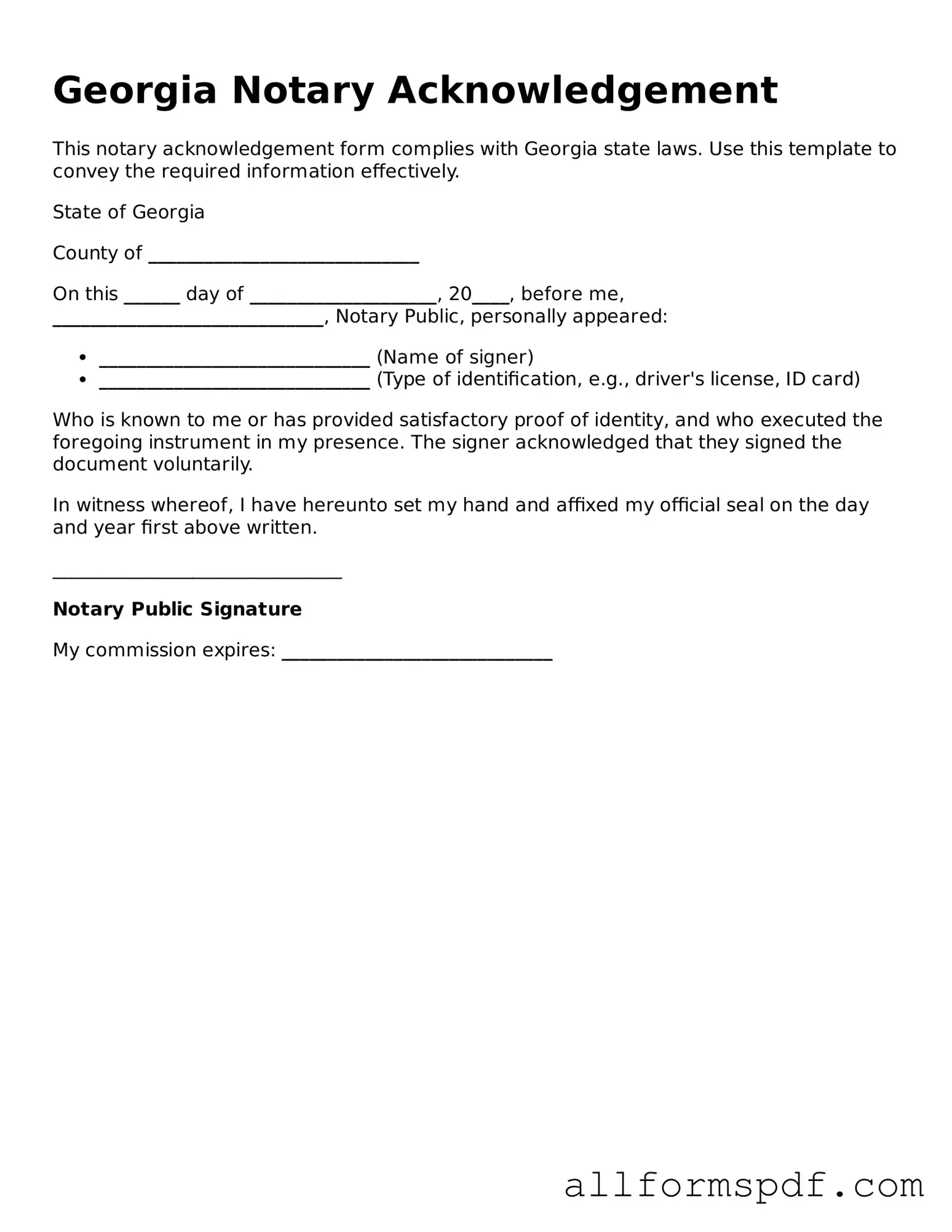Filling out the Georgia Notary Acknowledgment form can seem straightforward, but many individuals encounter pitfalls that can lead to complications. One common mistake is failing to include the correct date of the acknowledgment. The date is crucial, as it establishes when the document was signed. If this information is missing or incorrect, it can raise questions about the validity of the notarization.
Another frequent error involves the absence of the signer’s signature. It is essential that the individual whose signature is being notarized actually signs the document in the presence of the notary. If the signature is missing, the acknowledgment becomes invalid, rendering the document unenforceable.
People often overlook the requirement to provide the signer’s printed name. The form typically requests that the notary record the name exactly as it appears on the identification presented. Omitting this detail can create confusion and may lead to challenges regarding the identity of the signer.
Additionally, some individuals neglect to fill out the notary’s information correctly. This includes the notary’s name, commission number, and expiration date. Inaccuracies in this section can lead to complications if the document is ever questioned or required for legal purposes.
Another mistake is not using the appropriate type of acknowledgment. Georgia has specific language that must be included in the acknowledgment section. Failing to use the correct wording can result in a document that does not meet legal standards, which could invalidate the notarization.
Lastly, individuals sometimes forget to ensure that the notary is present at the time of signing. The notary must witness the signing of the document to fulfill their role. If the notary is not present, the acknowledgment cannot be completed, and the notarization will be deemed invalid.
